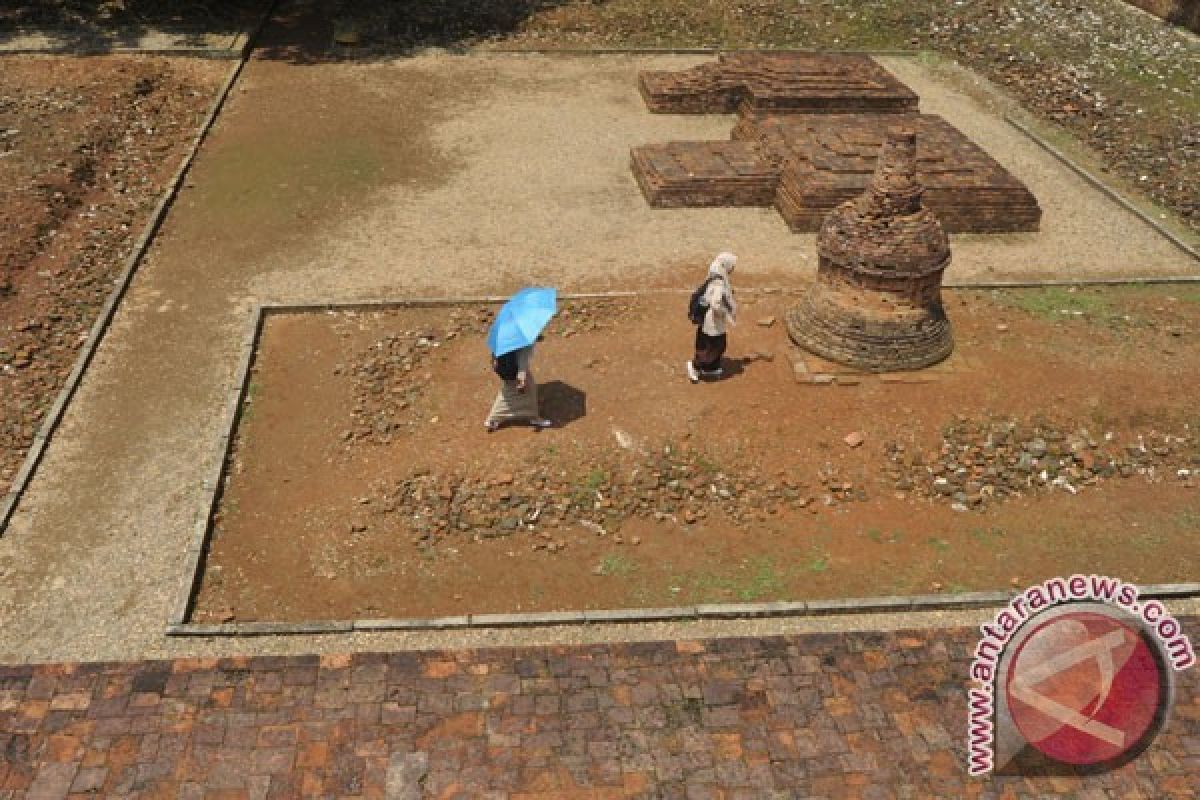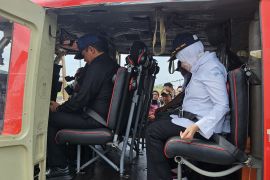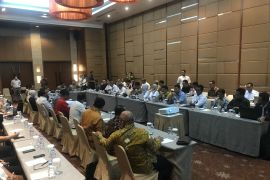... we took the opportunity to visit the temple."Jambi (ANTARA News) - Muarojambi Temple in Muarojambi Distict, Jambi province, has become a favorite tourist spot for Idul Fitri or Lebaran revelers, according to a local tourist guide.
Tourist guide Muhammad Havis, alias Ahok, age 35, said here on Saturday that the Muarojambi temple site had attracted about 2,000 visitors per day during the holiday.
"The number of visitors is even increasing on the third day of Lebaran festivity. The influx of visitors has caused congestion on the access road to the Muarojambi shrine," Ahok said in Sengeti, the district capital of Muarojambi.
He added that visitors to the temple had continued to increase every month since 2012. The average number of visitors reached 6,000 holiday tourists, most of them being local residents.
"The government should pay attention to this development. The people have had a positive response to the temple site and visited it. Facilities there should, therefore, be developed so that visitors would be content to spend their vacation," Ahok said.
Ida, age 30, one of the visitors, said that she was visiting the Muarojambi temple with her family to spend her vacation there.
"We are living and working in Palembang, (the provincial capital of South Sumatra). But we also have family members and relatives in Jambi. So, while we are having a family reunion, we took the opportunity to visit the temple," she said.
She said that Jambi has a few natural tourism spots, such as Muarojambi temple. "The location of this temple is good, as it is cold and on a river bank," she said.
The temple site is only about 30 km from the city and can be reached in about 30 minutes by motorcycle or car. Its location on the Batanghari River bank makes it a favorite natural and historic tourism site.
Sitting on an area of about 12 sq km, the Moarojambi temple houses 82 temple spots of various sizes. All temples there are now under the preservation of Jambi`s Ancient Heritage Preservation Agency (BP3).
The site spans 7.5 km from the east to the west on the Batanghari river bank. In the past, this site was not much known, except by local people.
The site began to be known to the public after S.C. Crooke, a British officer, was assigned to visit the Batanhari rural areas in 1820.
Also, a Dutch scholar, F.M Schnitger, conducted an expedition in Sumatra between 1935 and 1936. Since, then the Muarojambi temple site became known to the public.
Since 1976, various studies have been conducted by archaeologists at the site and it is now being preserved.
The area contains not only temples, but also various ancient artifacts such as statues, beads, ancient currencies and other artifacts.
There are eight temple complexes inside, ancient wells and more than 60 mounds containing the ruins of ancient buildings. Ancient canals made by primordial men, called Parit Sekupang, Parit Johor and Parit Melayu, are also located there.
(Uu.A014/INE/KR-BSR/H-YH)
Editor: Priyambodo RH
Copyright © ANTARA 2013









